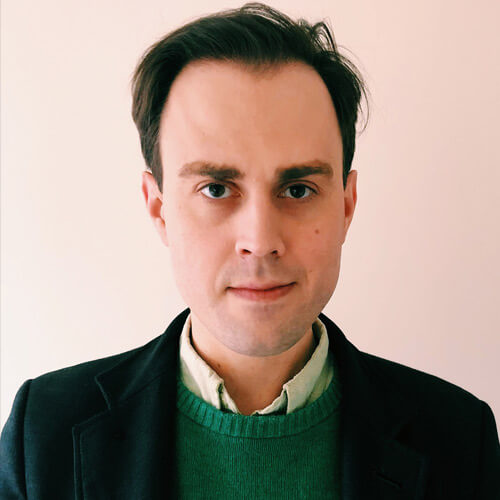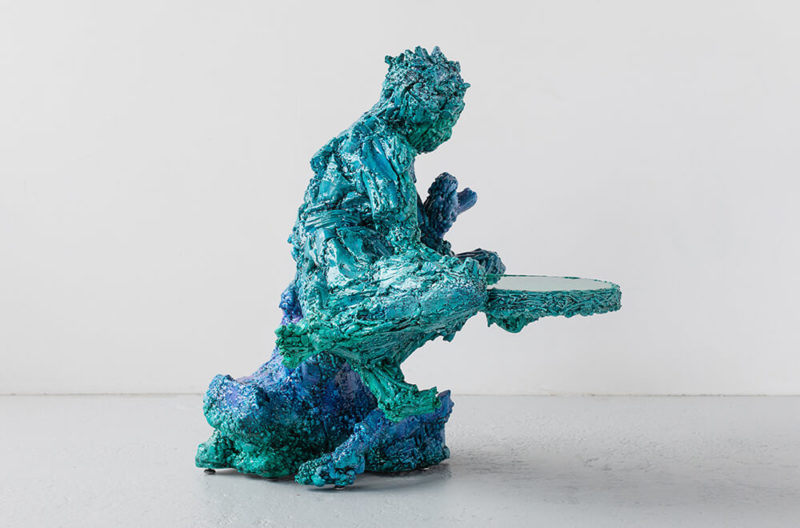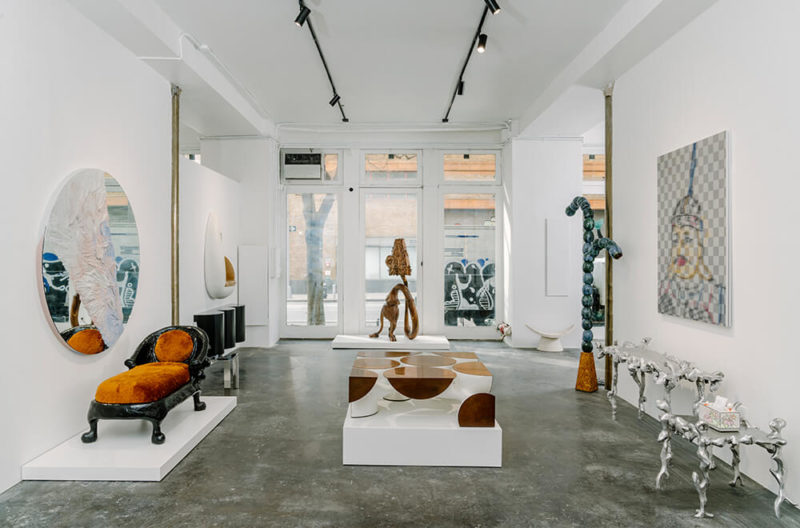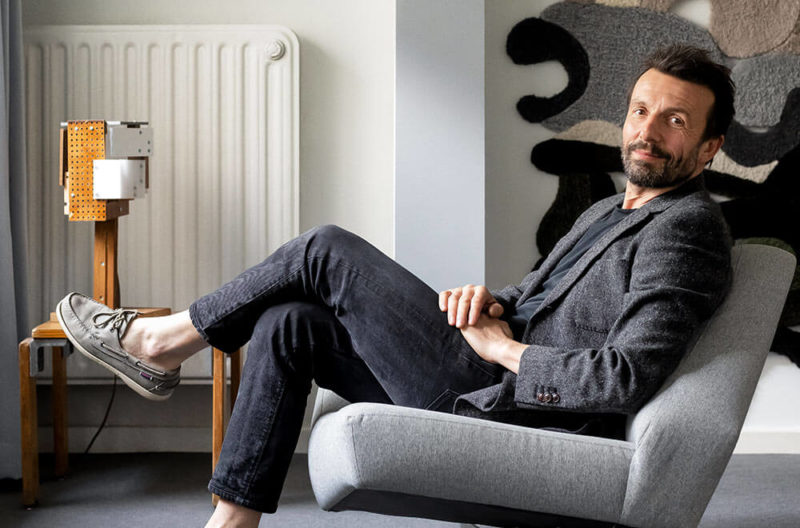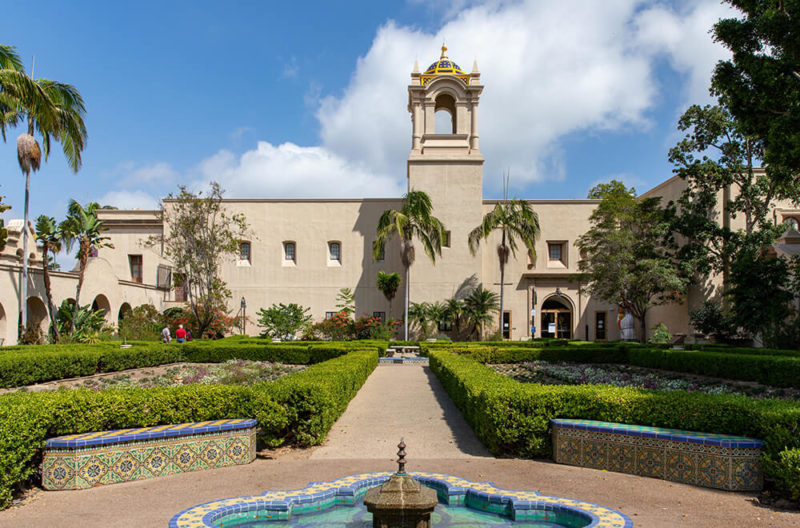Anders Herwald Ruhwald / This is the Living Vessel: Body
“I don’t subscribe to the idea that there is a special and separate world in which sculpture exists. To me, it’s an extension of everything else that humans produce."
Morán Morán, Mexico City
Until 9th April 2022
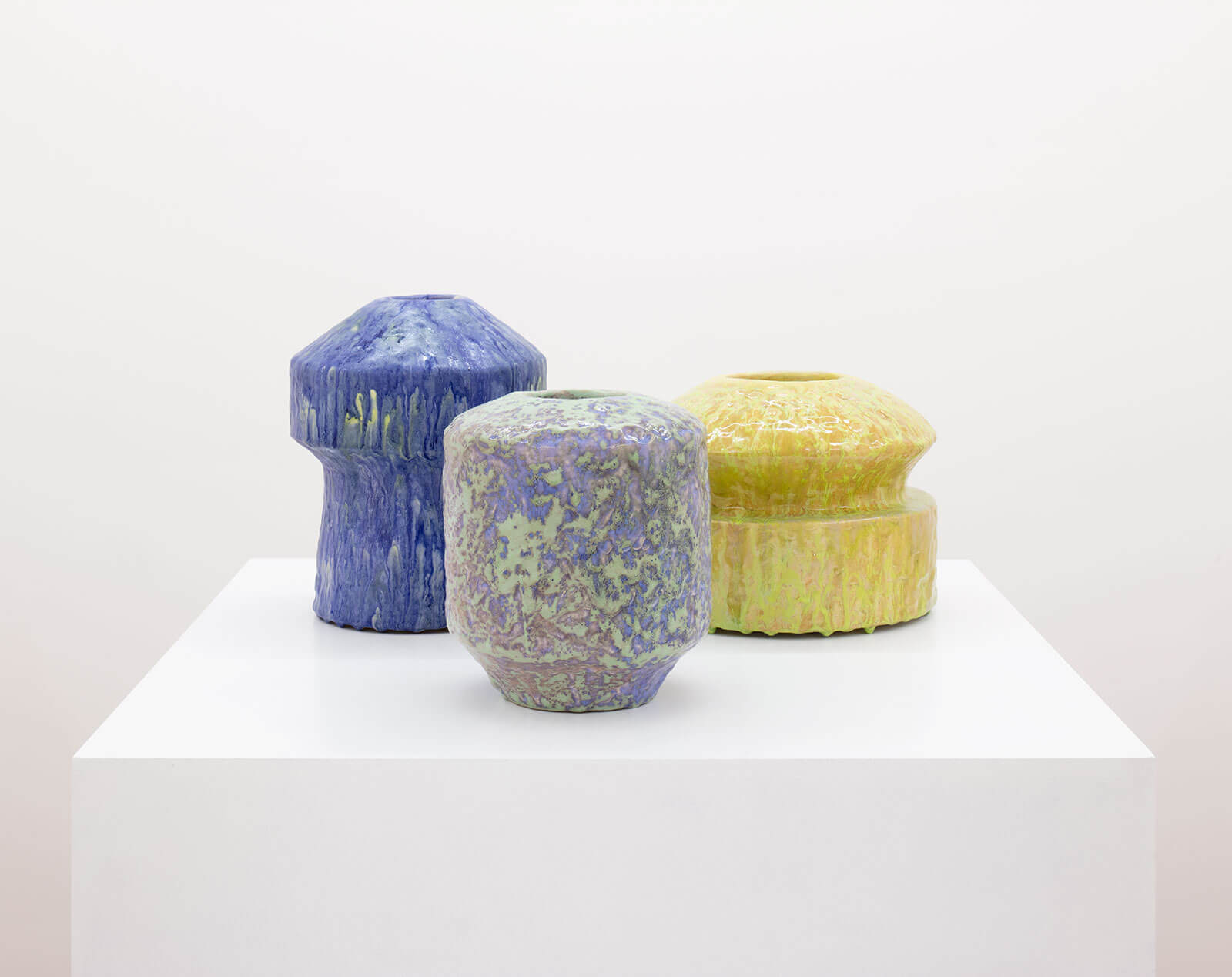
Anders Herwald Ruhwald, (left to right): ‘Glasur Stykke #89’, 2021; ‘Glasur Stykke #86’, 2021; ‘Glasur Stykke #100’, 2021
COURTESY: Anders Herwald Ruhwald & Morán Morán / PHOTOGRAPH: WhiteBalanceMX
BY WORKING WITH his preferred medium, ceramics, polymath Anders Herwald Ruhwald can engage with the skills he’s honed since the age of 15. Clay provides Ruhwald with the profound satisfaction of direct creation – seeing something useful or expressive be made from start to finish with one’s own hands. Working with this natural substance serves as a kind of literal and metaphoric grounding, a return to the earth, especially in an age dominated by digital detachment and virtual distraction. “My body intrinsically knows the clay’s properties,” the Chicago-based, Danish-born artist explains. “The material seems to offer endless possibilities that I can’t always predict.”
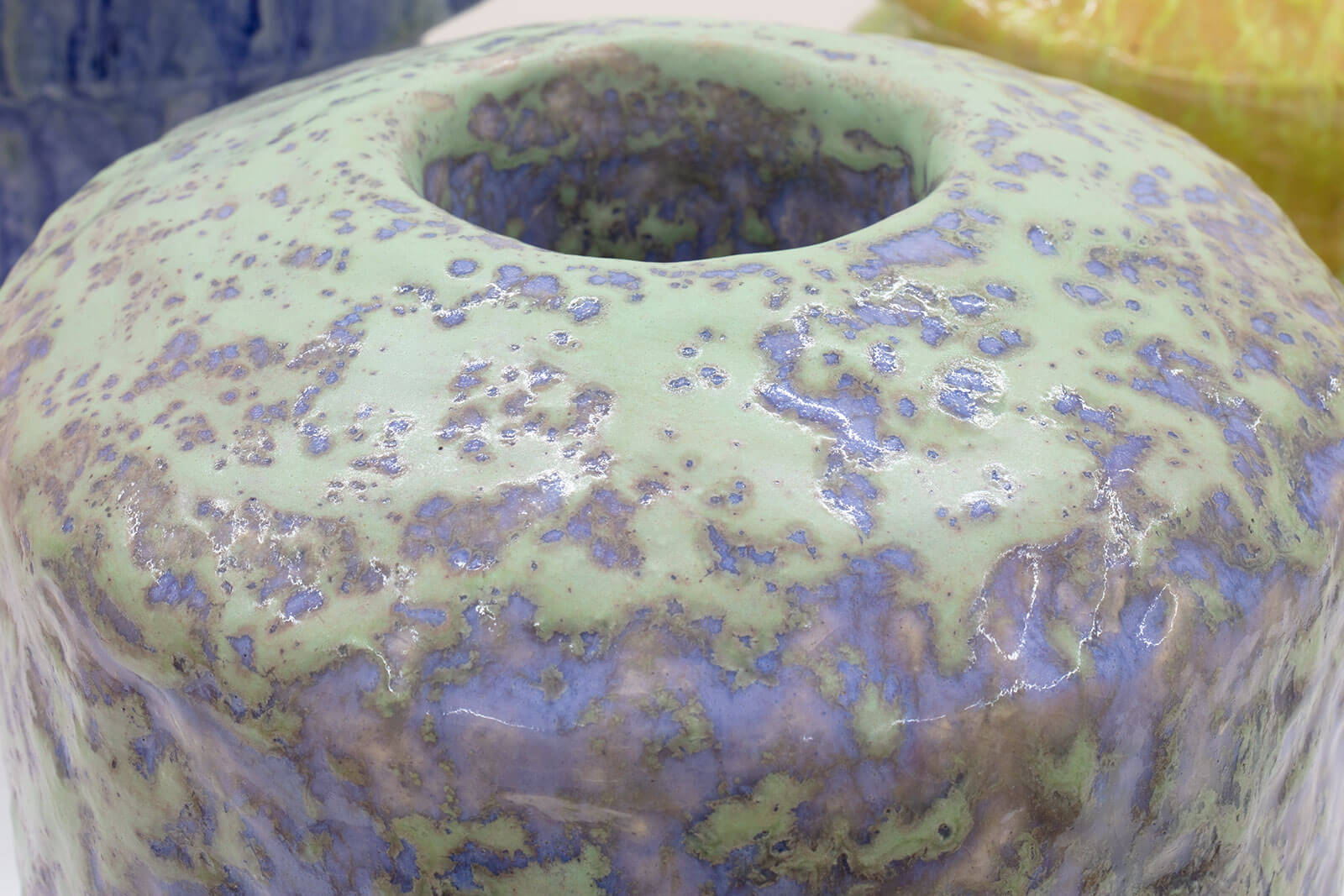
Anders Herwald Ruhwal, ‘Glasur Stykke #86’, 2021 (detail)
COURTESY: Anders Herwald Ruhwald & Morán Morán / PHOTOGRAPH: WhiteBalanceMX
The spontaneous fabrication process that Ruhwald applies provides him with the time and space to explore concepts in depth, such as the inherent link between the formation of vessels and the human body. “To me, the process of making is about aligning my ideas with the possibilities the material presents as I am forming them,” he adds. In his latest works, the artist takes this rationale a step further by drawing a connection between the transient properties of clay and organisms like plants.
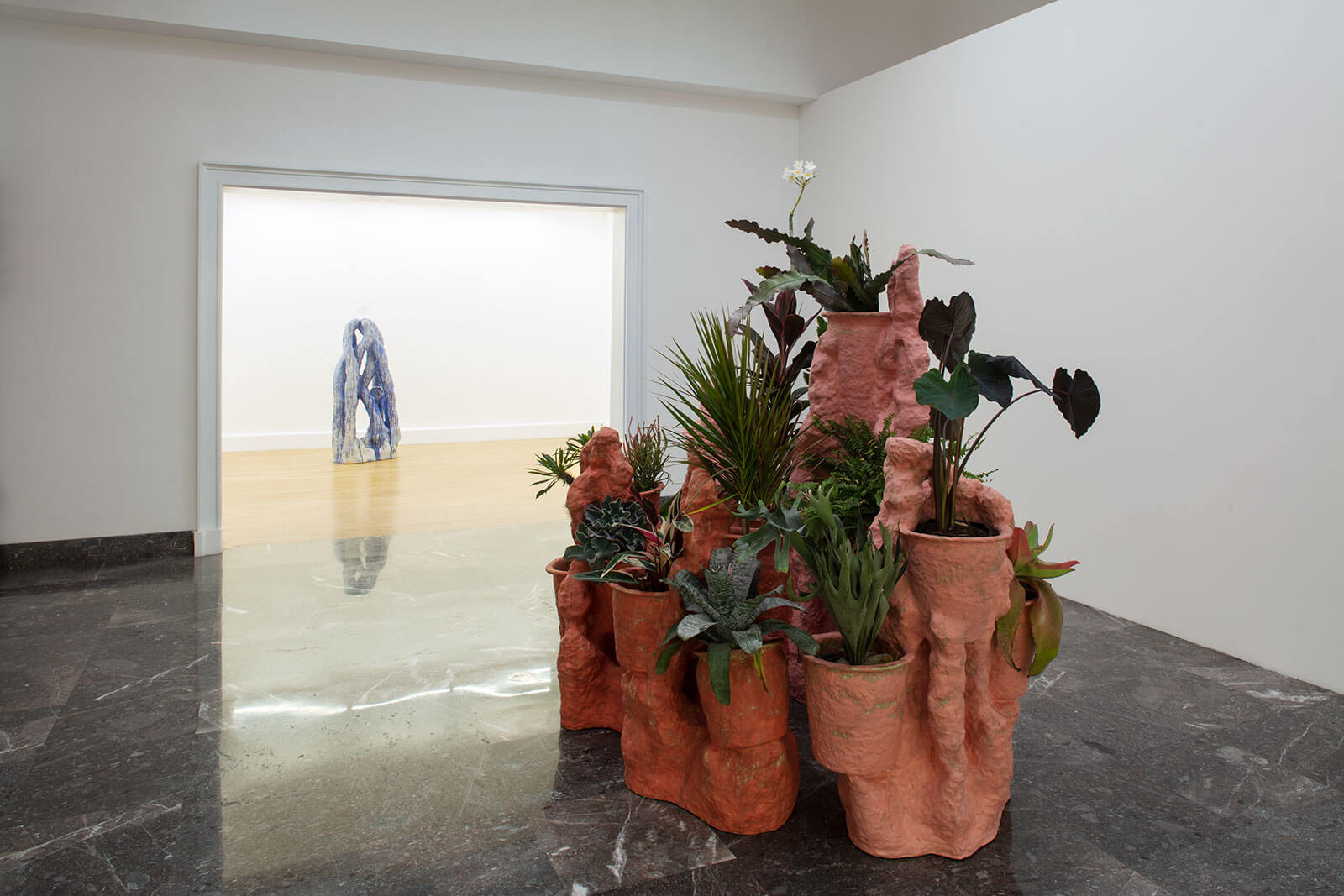
Installation view
COURTESY: Anders Herwald Ruhwald & Morán Morán / PHOTOGRAPH: WhiteBalanceMX
Presented at Mexico City gallery Morán Morán, Ruhwald’s exhibition ‘This is the Living Vessel: Body’ centres around a cluster of five amorphous red and pink vessels outfitted with planter pot protrusions. ‘Objects for Three Plants (Petitot’s Dream #6-10)’ is emphatically a living sculpture with foliage becoming an integral element of the totemic installation and its structural integrity.
The project was inspired by fellow Danish ceramicist Axel Salto (1889-1961), whose oeuvre often grappled with the notion of growth cycles. In Ruhwald’s mind, the pieces embody a different type of kineticism, one predicated on the natural progression of birth and decay rather than mechanics. The vessels require earth and maintenance and, because of that, also demand participation.
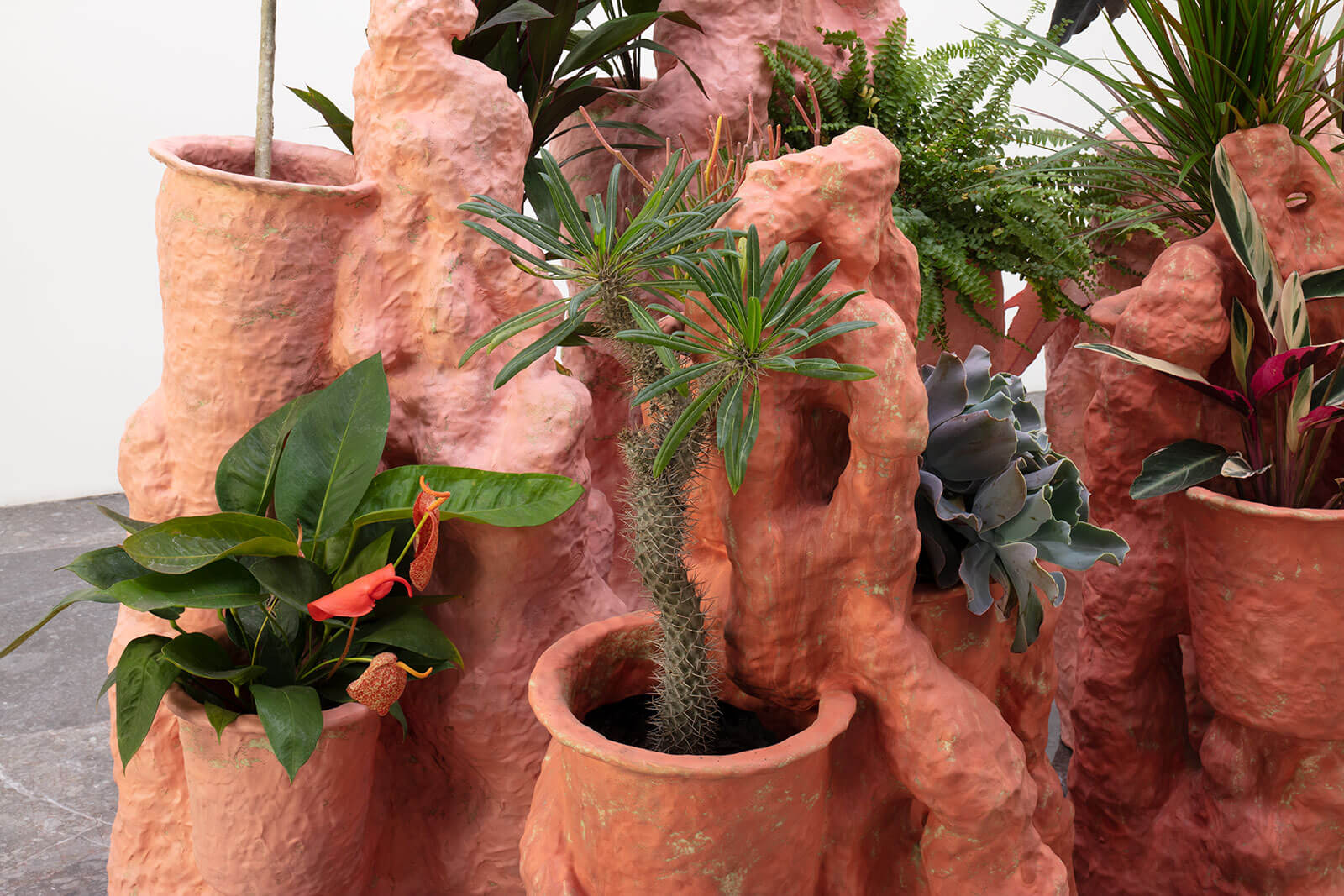
Anders Herwald Ruhwald, ‘Object for 3 plants’ collection, 2022 (detail)
COURTESY: Anders Herwald Ruhwald & Morán Morán / PHOTOGRAPH: WhiteBalanceMX
“I don’t subscribe to the idea that there is a special and separate world in which sculpture exists,” Ruhwald declares. “To me, it’s an extension of everything else that humans produce, and art only makes sense as part of the complexity of everything else we have around us. Recently, I began exploring the possibilities of sculptures that require nurture and care; the series of plant sculptures are a way of addressing this. There is a kind of unpredictability embedded within the object as the plants grow and wilt with time.”
On view until 11th April, the solo show also incorporates works like ‘Yesterday’s Dream (The Future)’ – an arch of intersecting dripping blue-glazed arms that join together to carry two crystal balls. Such a symbolic gesture expresses the simultaneous states of becoming and decaying.
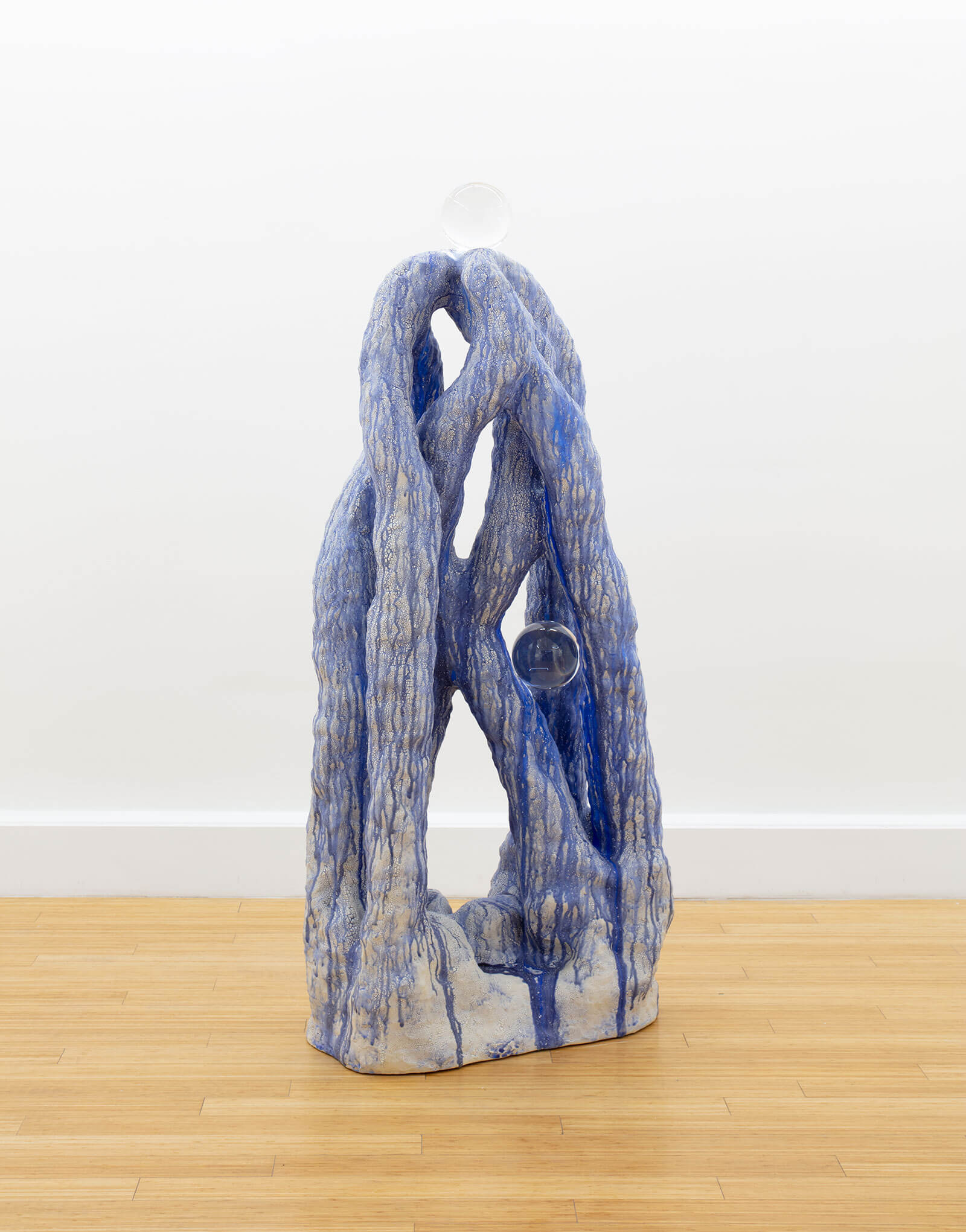
Anders Herwald Ruhwald, ‘Yesterdays Dream (The Future)’, 2022
COURTESY: Anders Herwald Ruhwald & Morán Morán / PHOTOGRAPH: WhiteBalanceMX
As another type of interconnected vessel, the two large-scale pieces, ‘Holder #4’ and ‘Holder #5’ – pale and skeletal – play on the duality of illumination and composition that a candle embodies.
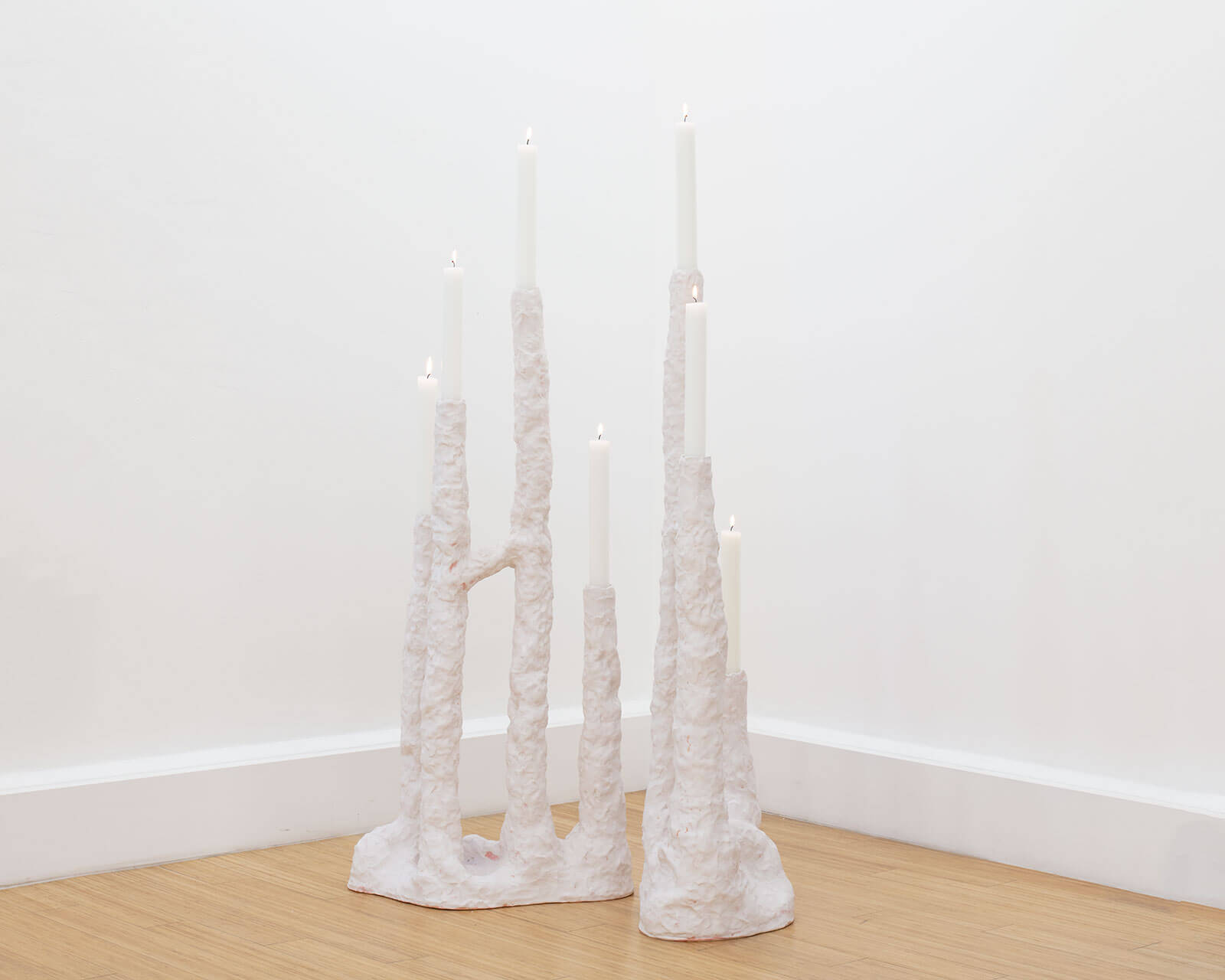
Anders Herwald Ruhwald, (left) ‘Holder #5’, 2022; (right) ‘Holder #4’, 2022;
COURTESY: Anders Herwald Ruhwald & Morán Morán / PHOTOGRAPH: WhiteBalanceMX
Further flung in the gallery, twelve objects from Ruhwald’s ‘Glasur Stykke’ series take centre stage on three plinths. The various iterative forms are part of a series of glaze experiments the artist has been running for the past six years.
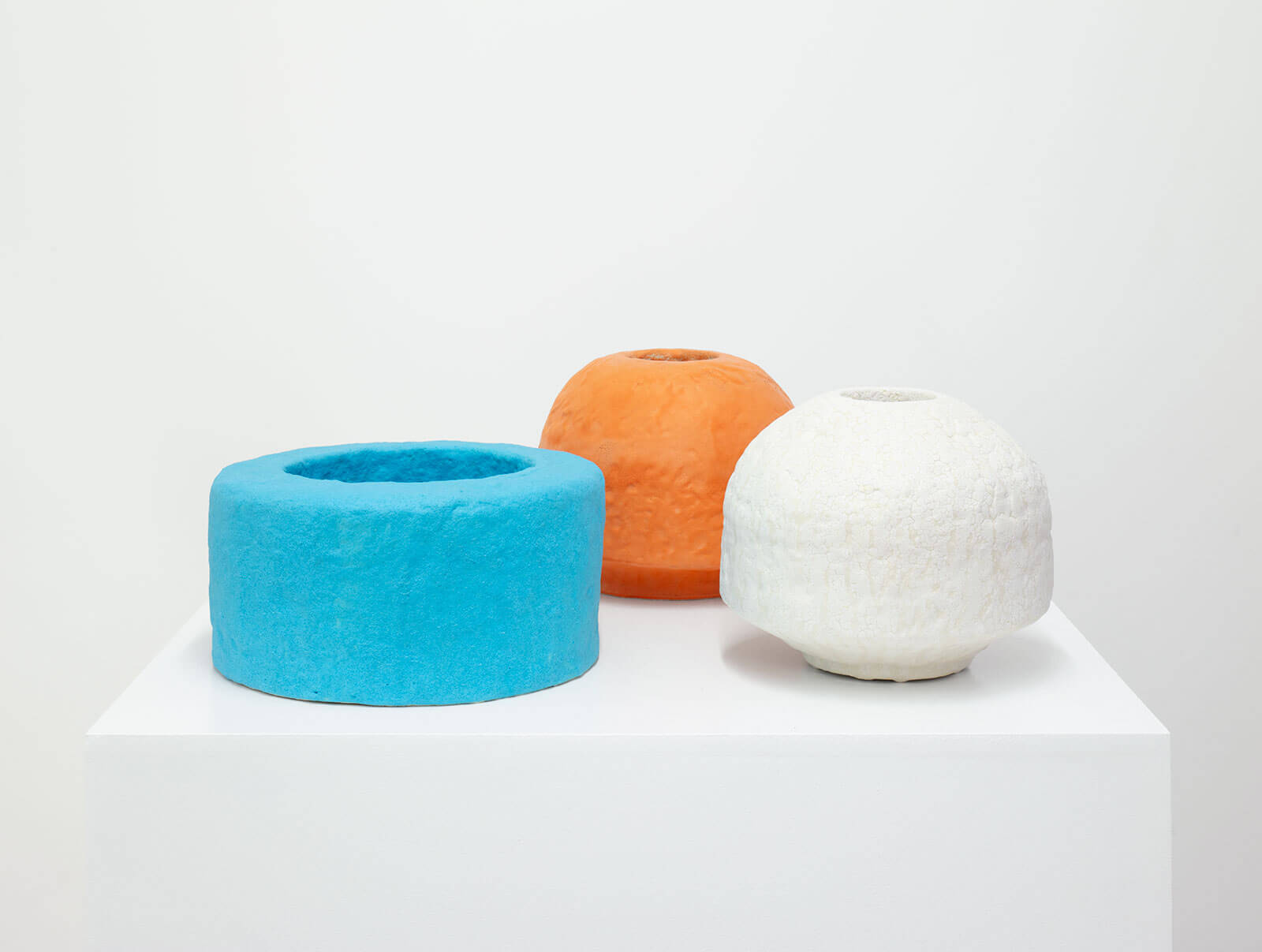
Anders Herwald Ruhwald, (left to right): ‘Glasur Stykke #73’, 2021; ‘Glasur Stykke #92’, 2021; ‘Glasur Stykke #75’, 2021
COURTESY: Anders Herwald Ruhwald & Morán Morán / PHOTOGRAPH: WhiteBalanceMX
Though most of these works communicate their purpose strongly, Ruhwald is careful not to imbue them with determined meanings. He intends merely to make suggestions about what these objects might be used for, as if testing the limits of what function entails within the realm of design.
Anders Herwald Ruhwald ‘This is the Living Vessel: Body’ at Morán Morán, Av. Horacio 1022, Polanco, Miguel Hidalgo 11550, Mexico City.
